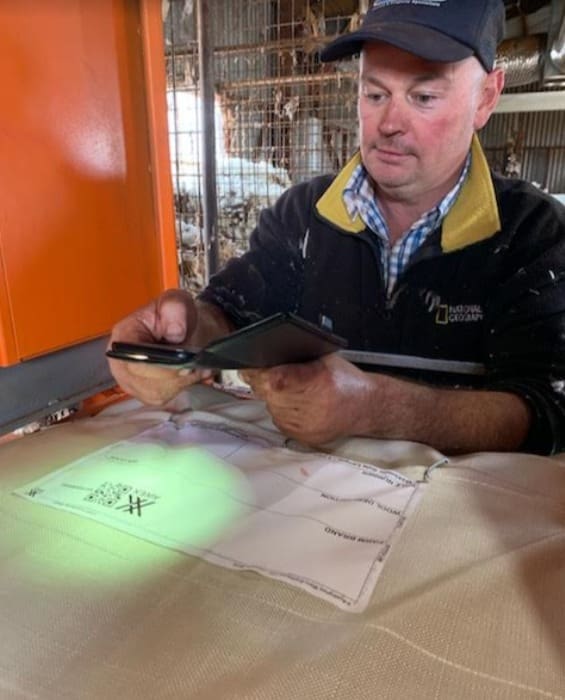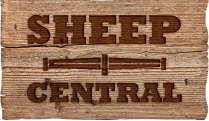
NSW wool classer Doug Mortimer scans an eBale QR code into WoolClip with his mobile phone.
ADOPTION of key traceability efficiency tools available to wool growers, exporters and brokers remains incomplete in the Australian wool industry despite market feedback of other countries’ pre-eminence.
The Australian Wool Testing Authority is expected to soon require Property Identification Codes with wool test certificates after International Wool Textile Organisation approval was gained recently.
The linking of PICs to test certificates is regarded as fundamental to traceability via the Australian Wool Traceability Hub, and especially for management of the impacts of emergency animal disease incursions on the industry.
However, two other important traceability tools available to the industry — eBale and WoolClip with its eSpeci –are not mandatory and their uptake is not yet complete across the industry.
AWEX chief executive officer Mark Grave said the Australian wool industry leads the world in enabled and traceable wool packs, having taken the decision that every wool pack imported since 1 July 2023 must have an embedded unique eBale-ID number available through a QR code and the RFID (Radio Frequency identification) chip in the label.
“The QR code is able to be captured on farm, via WoolClip and the use of a smart phone, and the RFID is available for industrial use and is easily scanned/read in both domestic and overseas warehouses.
“These two technologies are at their very essence, the critical pieces required at the start of wool’s traceability journey,” he said.
Mr Grave said since 1 July 2023, more than 2.8m eBale labels have been introduced to the Australian wool supply chain.
“This is equivalent to two years of wool production at today’s most recent forecast,” he said.
“Over the last two and a half years wool growers have been using their remaining old non-eBale wool pack stock which is essential for Australia’s biosecurity assurance and to give confidence to our customers in the value add of Australia’s traceable wool.”
Mr Grave said information he is receiving from major wool handling warehouses and stores indicates more than half, and possibly up to 70 percent, of the first-hand bales they are receiving now are eBales. He said industry inventory of old non-eBale packs is diminishing quickly and use of eBale packs is increasing.
“So it’s out there, it’s a matter of the industry taking advantage of what is in front of it.”
While recognising that some brokers bought large numbers of non-eBale packs before their manufacture stopped in December 2022, he said the approach had always been to phase in the new eBale packs rather than require their mandatory uptake.
Mr Grave said on behalf of the Australian wool industry, AWEX continued to invest heavily in traceability via eBale and WoolClip.
“Since July 2023, AWEX has conducted 123 WoolClip workshops around Australia and provided a support line for WoolClip enquiries or help.
“The introduction of and change over to eBale comes at a cost to AWEX, but one that AWEX is prepared to bare in the interest of propelling the Australian wool industry forward,” he said.
Mr Grave said this season (24/25 YTD) WoolClip has captured 285,000+ bales, equivalent to 19.8pc of total forecast production.
He said the benefits of these tools include:
Growers: permanent copies of wool harvesting records (Classers Specifications/NWD/Wool Book), NWD completion on WoolClip at 96pc-plus, transparency of every wool harvest – each bale and each kg, greater control of your data, who receives it and increased speed to market. Cost – nil.
Selling agents/warehouses: Quick receival of wool harvest data including consignments/NWD/Classer Specifications, downloaded into systems (no double handling costs and errors), data from farm is reduced of error and follow up to clients, data can be received before wool arrives, used in store and when sold.
Exporters: traceable data and unique bale numbers, processors are increasingly automated and seeking RFID technology to increase their efficiency.
Mr Grave said the value of digitally traceable wool bales in the event of a biosecurity event should not be underestimated.
“International/domestic trade demands it and this may determine market access in the future,” he said.
“Australia has done a great job in building the (traceability) infrastructure to be used and what we want is for everyone to take advantage of it, and realise it’s to their betterment.”

HAVE YOUR SAY